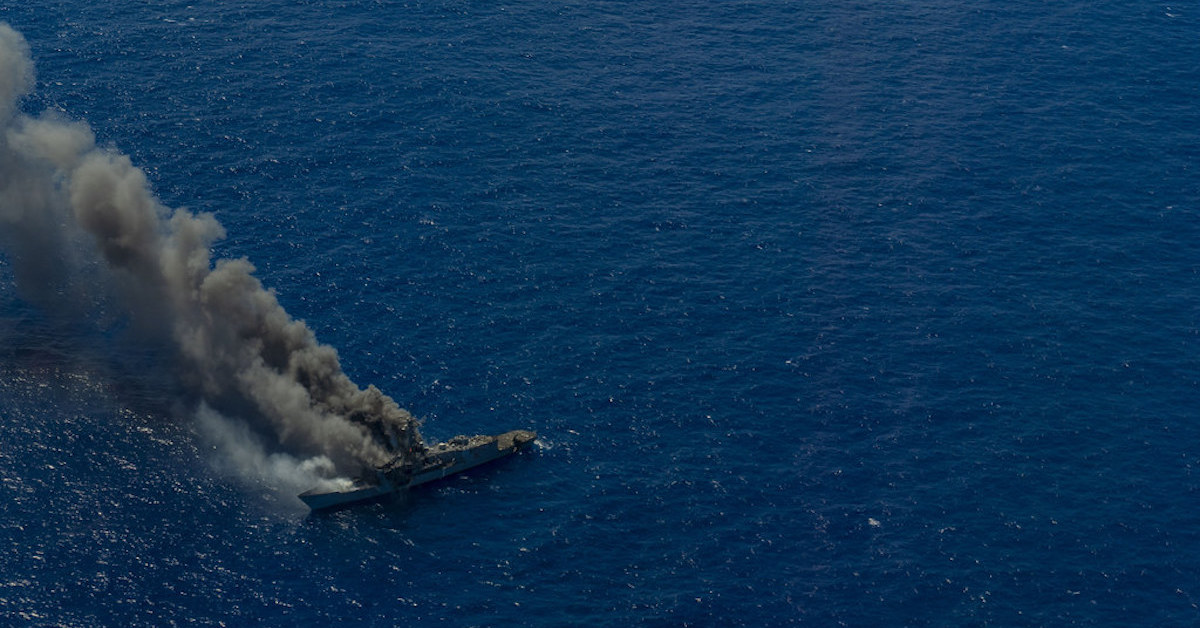On August 15, 2021, U.S. joint forces conducted coordinated, multi-domain, multi-axis, long-range maritime strikes during a sinking exercise on the decommissioned guided-missile frigate, ex-USS Ingraham. The exercise took place in the Hawaiian Islands Operating Area as part of the U.S. Military’s Large Scale Exercise 2021.
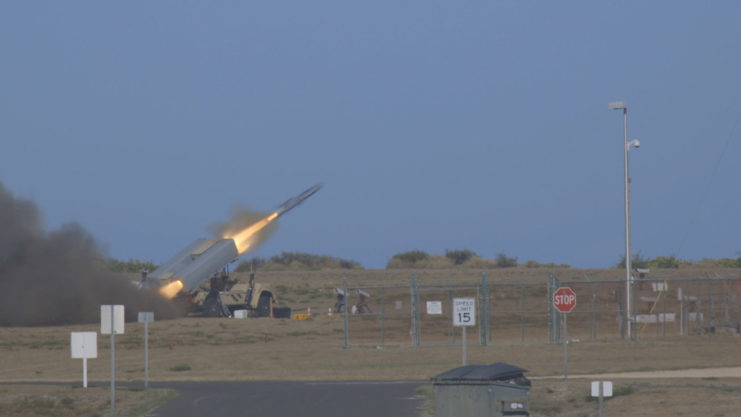
The exercise was conducted with the aim of showing the U.S. Military’s ability to destroy enemy ships during combat. It followed Naval protocol, which requires the ship be sunk in at least 6,000 feet of water and 50 nautical miles from land. Surveys were conducted to ensure there was no harm to marine mammals or people.
The U.S. 3rd Fleet conducts these training exercises alongside its operations in the Indo-Pacific. It works closely with other Fleets to provide commanders with “capable, ready forces to deploy forward and win in day-to-day competition, in crisis and in conflict.”
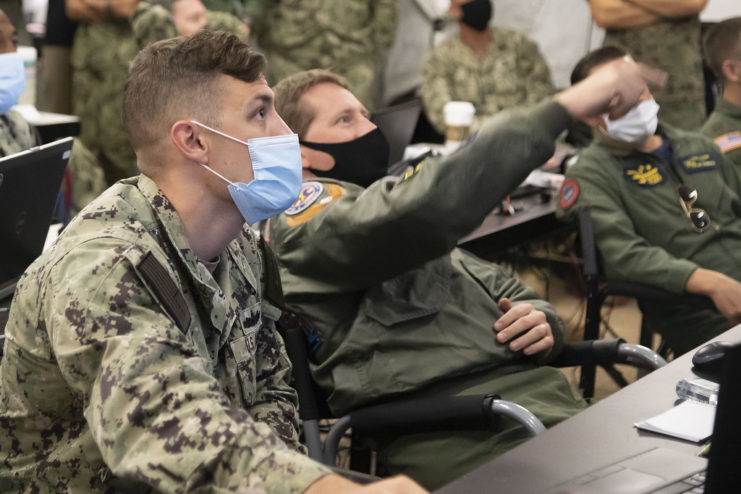
The exercise was conducted with units from the I Marine Expeditionary Force/3rd Marine Air Wing, the Vinson Carrier Strike Group, the U.S. Army Multi-Domain Task Force, and the III Marine Expeditionary/3rd Marine Division.
It involved the Navy-Marine Expeditionary Ship Interdiction System, which uses an unmanned vehicle based on the Joint Light Tactical Vehicle’s chassis, more commonly known as the Remotely Operated Ground Unit Expeditionary-Fires, that carries twin Naval Strike Missile launch canisters.
F/A-18 Super Hornets from the USS Carl Vinson launched the AGM-154 Joint Stand-Off Weapon. The exercise also involved at least one P-8A Poseidon, the USS Chicago, which coordinated the launch of a UGM-84 anti-ship Harpoon missile.
During the drill, two Naval Strike Missiles were launched, one by C-130 and the second by LCAC hovercraft. The struck their target as planned after flying some 100 miles to the ex-USS Ingraham.
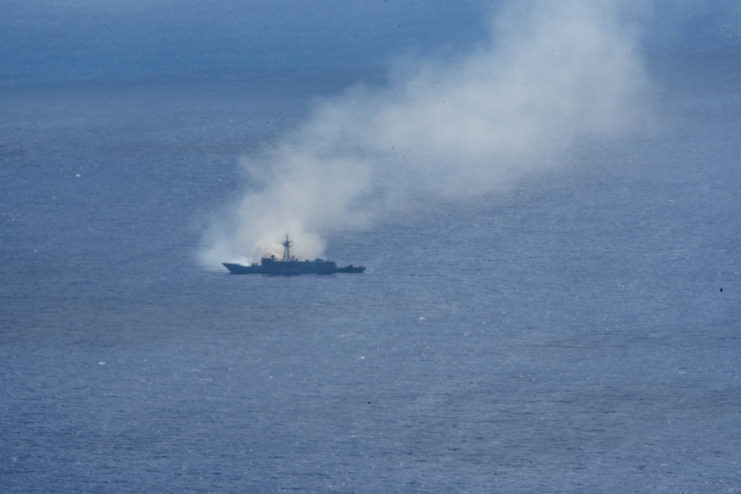
Speaking in a statement, U.S. 3rd Fleet Commander Vice Admiral Steve Koehler said,”Lethal combat power was effectively applied to a variety of maritime threats over the last two weeks in a simulated environment, as part of the Navy’s Large-Scale Exercise, and expertly demonstrated Sunday with live ordinance.
“The precise and coordinated strikes from the Navy and our joint teammates resulted in the rapid destruction and sinking of the target ship and exemplify our ability to decisively apply force in the maritime battlespace,” he concluded.
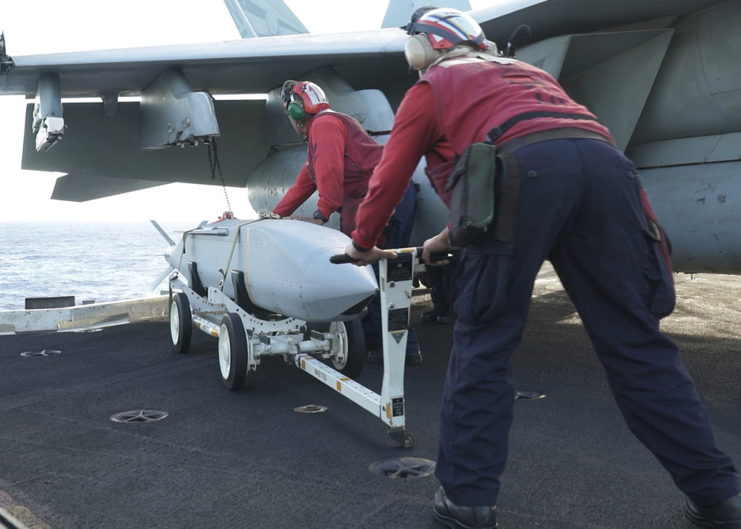
Former Navy vessels used in sinking exercises are prepared in compliance with regulations prescribed and enforced by the Environmental Protection Agency under a permit the Navy holds pursuant to the Marine Protection, Research and Sanctuaries Act.
Prior to being transported, the vessels are put through a rigorous cleaning process and are inspected to ensure they comply with EPA requirements.
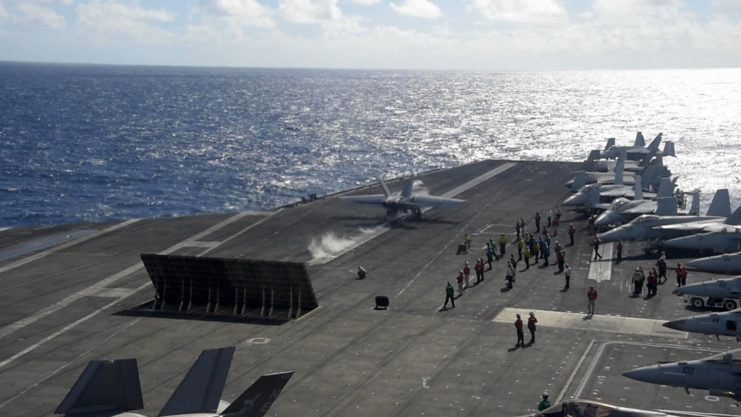
The ex-USS Ingraham was commissioned on August 5, 1989 and was decommissioned on January 30, 2015. It was named after Naval officer Duncan Nathaniel Ingraham and is the last Oliver Hazard Perry-class guided-missile frigate built by the U.S.
It’s also the second of its name to be sunk, with the Allen M. Summer-class destroyer, the ex-USS Ingraham (DD 694), having been sunk in 2001.
